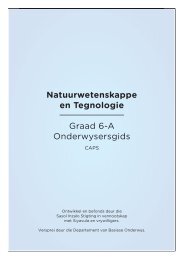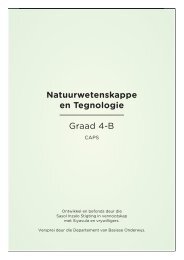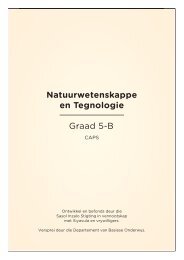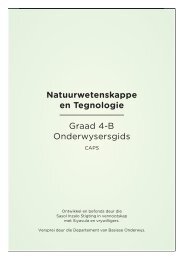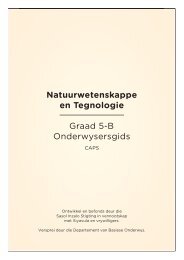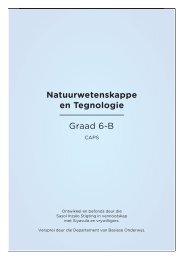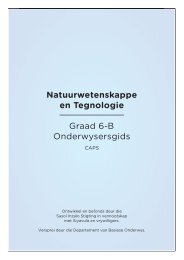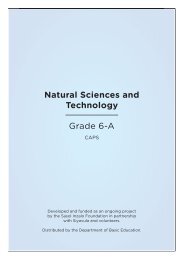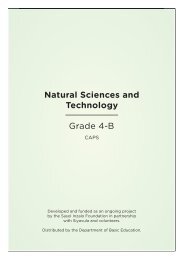Natural Sciences and Technology Grade 5-B ... - Thunderbolt Kids
Natural Sciences and Technology Grade 5-B ... - Thunderbolt Kids
Natural Sciences and Technology Grade 5-B ... - Thunderbolt Kids
You also want an ePaper? Increase the reach of your titles
YUMPU automatically turns print PDFs into web optimized ePapers that Google loves.
The people in the submarines saw anemones like this in the<br />
deepest part of the ocean. 3<br />
They found rocks that look like those in the photograph. So the crust<br />
rock lies under the oceans as well as under our feet. The crust is a<br />
layer of rock all around the Earth, like the shell of a hard-boiled egg.<br />
The mantle <strong>and</strong> the core lie even deeper under the<br />
crust.<br />
If we go deeper than the crust, we go into rock called the mantle.<br />
The mantle is the layer that lies underneath the crust. Mantle rock<br />
is much hotter than the rock that is found in the crust. The rocks<br />
are so hot that they are soft in some places, like toothpaste. If<br />
there is aweak spot in the crust, the hot rock pushes upwards <strong>and</strong><br />
it might burst out. This is how volcanoes happen. The mantle is<br />
2 900 km thick, so we still have a long way to go down.<br />
QUESTIONS<br />
Find the mantle in the diagram of the Earth cut open. Mark<br />
it with your pencil. How could you get to the mantle? Which<br />
way do you have to go?<br />
You would have to dig a very deep hole down into the centre<br />
of the Earth.<br />
The core is still deeper than the mantle. It is very hot, as hot as the<br />
surface of the Sun, <strong>and</strong> made of mostly iron.<br />
Chapter 2. Surface of the Earth<br />
91



